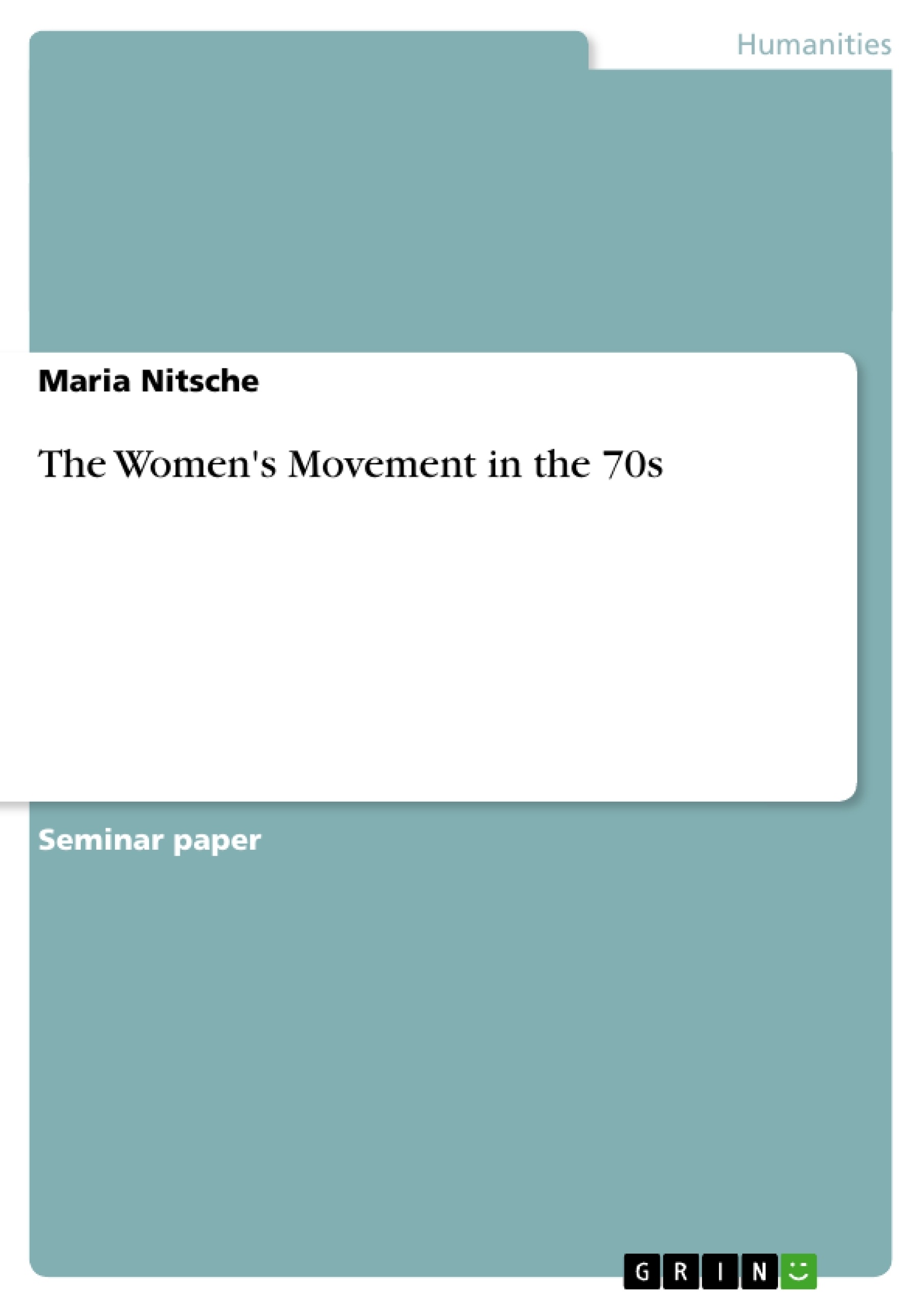The analysis "The Womens Movement in the 70s" examines the rising of the Women’s Liberation Movement in the 1970s in Britain; it discusses and debates the different steps taken by women towards greater freedom and the continual fight for their rights. It does not only focus on the achievements made in this time, but also points out the change the Liberation Movement underwent and the conflicts which arose as a consequence of it.
Table of Contents
- Introduction
- 1970-1974 Years of mass working-class struggle
- Rising
- Organising in Britain
- Men in the Women's Movement
- Women's Voice
- Women's Movement in the press
- Women's Press
- The Women in Media group
- Women's journals
- Female writers and Feminist Presses
- Research and Resources Centres
- Campaigning
- Disruption of the Miss World Beauty Contest
- Economic campaigns
- Night Cleaners' Campaign
- Campaign for Financial and Legal Independence
- Wages for Housework Campaign
- Campaigns for free 24-hour child care
- The Abortion Campaign
- Sexual Liberation Campaign
- 1975 Turning-Point
- Implementation of two major acts
- International Women's Year
- Moving further from mainstream politics
- 1976-80 Away from the labour movement
- Out of place in the Women's Movement
- Changes in the demands
- New Directions
- Conflicts
- Three main trends within the Women's Liberation Movement
- Lesbians vs. Heterosexual Women
- Radical separatists vs. Non- separatists
- Conclusion
Objectives and Key Themes
This analysis aims to examine the rise of the Women's Liberation Movement in the 1970s in Britain, discussing and debating the steps taken by women towards greater freedom and their continual fight for rights. It will focus on the achievements made during this time, as well as the changes the Liberation Movement underwent and the conflicts that arose as a consequence.
- The emergence and development of the Women's Liberation Movement in Britain in the 1970s
- The different strategies and tactics employed by women in their fight for equal rights
- The achievements and limitations of the Women's Liberation Movement in this period
- The internal conflicts and divisions within the movement
- The evolving nature of feminist demands and priorities throughout the 1970s
Chapter Summaries
The analysis begins by outlining the political, economic, and social context of the 1970s, highlighting the turbulent environment in which the Women's Liberation Movement emerged. It then explores the early years of the movement, characterized by a surge of activism and grassroots organizing, focusing on the rise of women's strikes, the emergence of "submerged networks" of women's groups, and the development of women's centers as spaces for self-education and collective action. The analysis examines key campaigns of the time, including the Night Cleaners' Campaign, the Wages for Housework Campaign, and the Abortion Campaign, shedding light on the movement's diverse demands and strategies.
The analysis continues by examining the turning point of 1975, highlighting the impact of the implementation of two major acts and the International Women's Year, while also noting a shift away from mainstream politics. It then looks at the period from 1976 to 1980, characterizing it as a time of internal conflict and change within the movement, with the Women's Liberation Movement facing challenges and evolving in response to the changing political landscape. Finally, the analysis explores the various conflicts that emerged within the movement, including those between lesbians and heterosexual women and between radical separatists and non-separatists.
Keywords
The key keywords and focus topics of the text are: Women's Liberation Movement, feminism, women's rights, equal rights, gender equality, activism, grassroots organizing, women's strikes, campaigns, consciousness-raising, self-education, women's centers, internal conflicts, divisions, evolution of feminist demands.
- Quote paper
- Maria Nitsche (Author), 2003, The Women's Movement in the 70s, Munich, GRIN Verlag, https://www.grin.com/document/33609




